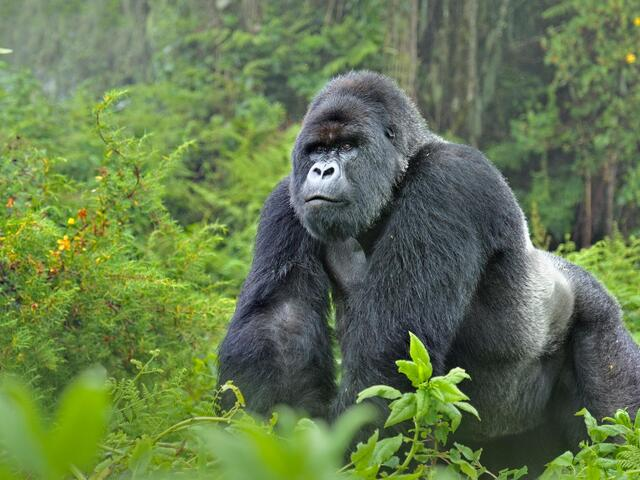🦍 Understanding Gorillas: Species, Behavior, and Conservation

Gorillas are the largest living primates and among the most intelligent, social, and emotionally expressive animals on the planet. They share around 98% of their DNA with humans, making them our close evolutionary relatives.
Despite their strength and size, gorillas are gentle, peaceful herbivores, and play a critical role in the health of their forest ecosystems. Yet, they remain critically endangered due to habitat loss, disease, poaching, and political instability in their home regions.
🌿 Gorilla Species and Subspecies
There are two main species of gorillas, each with subspecies:
1. Eastern Gorilla (Gorilla beringei)
- Found in: Uganda, Rwanda, DRC
- Subspecies:
- Mountain Gorilla (G. b. beringei) – ~1,063 individuals remain (2023 estimate)
- Eastern Lowland Gorilla / Grauer’s Gorilla (G. b. graueri) – fewer than 3,800 individuals, found only in DRC
2. Western Gorilla (Gorilla gorilla)
- Found in: West and Central Africa (e.g., Cameroon, Gabon)
- Subspecies:
- Western Lowland Gorilla (G. g. gorilla)
- Cross River Gorilla (G. g. diehli) – critically endangered, with fewer than 300 individuals
This article focuses on the mountain gorillas and eastern lowland gorillas, which are the highlights of tourism in Uganda, Rwanda, and Congo.
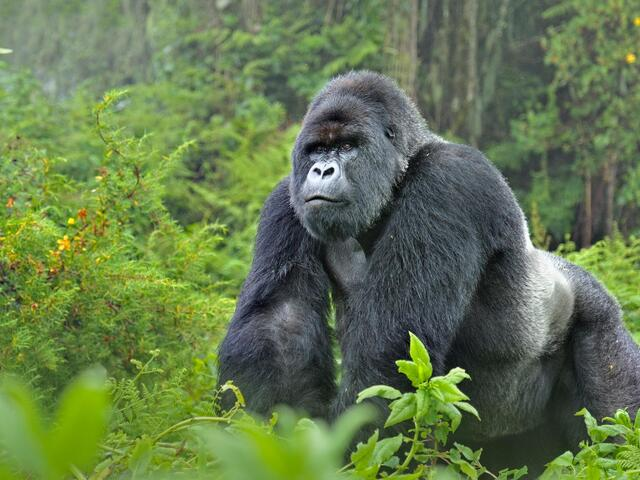
🧠 Gorilla Behavior and Social Structure
Gorillas are highly intelligent and have been observed using tools, displaying empathy, and forming deep social bonds.
Key behavioral traits:
- Live in groups called troops or families, led by a dominant silverback (a mature male with a silver-colored back).
- Group size can range from 5 to 30 individuals.
- Silverback males protect the group, mediate conflict, and lead movement and feeding.
- Females raise their young and form close-knit maternal bonds.
- Gorillas are non-aggressive unless threatened and prefer flight over fight.
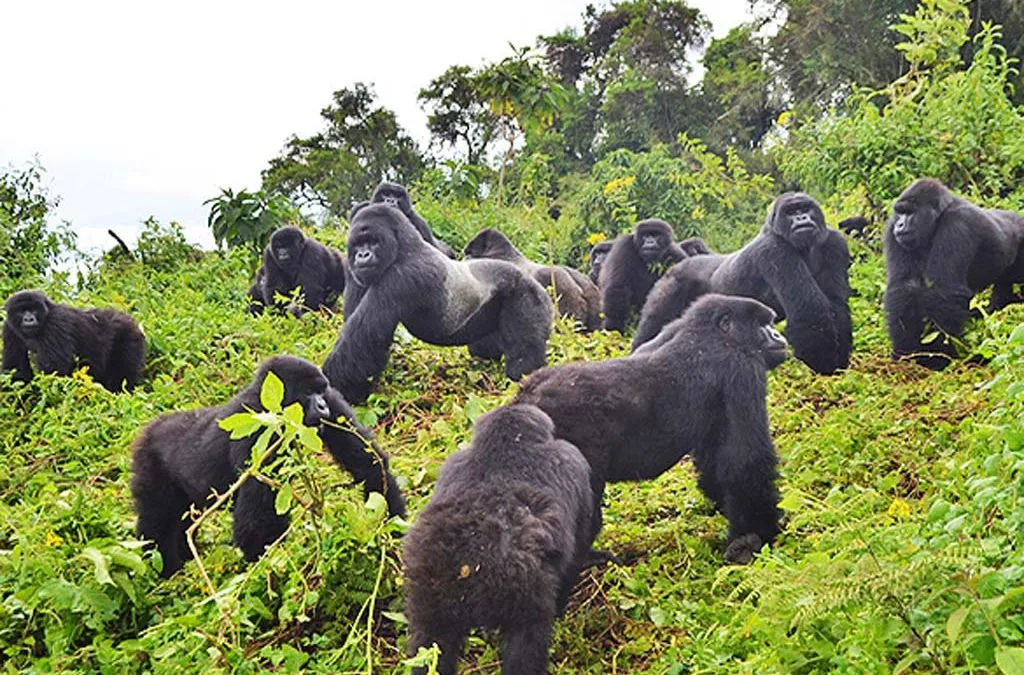
Daily routine:
- Wake up at sunrise
- Spend most of the day feeding, resting, and grooming
- Build fresh nests from leaves each night for sleeping
🍼 Gorilla Life Cycle
| Stage | Age | Details |
|---|---|---|
| Infant | 0–3 years | Nursed by mother, carried everywhere |
| Juvenile | 3–6 years | Starts playing independently, imitates adult behaviors |
| Subadult | 6–10 years | Learns social roles, spends more time away from mother |
| Adult | 10+ years | Females start reproducing; males develop silver backs at ~12 yrs |
| Lifespan | Up to 35–40 years (wild), 50+ in captivity |
Gorillas have slow reproductive rates—females give birth to one baby about every 4 years. This makes population recovery difficult and slow, hence the species’ vulnerability.
🍃 Diet and Habitat
- Gorillas are mostly herbivorous:
- Eat leaves, stems, fruit, bark, and occasionally insects
- Mountain gorillas tend to eat more foliage due to fewer fruit trees at high altitudes
- Habitat:
- Mountain gorillas live in cloud forests at elevations of 2,200 to 4,300 meters.
- Lowland gorillas prefer tropical rainforests with richer biodiversity.
🦠 Threats to Gorillas
Despite conservation efforts, gorillas face multiple threats:
- Poaching: For bushmeat or traditional medicine (though illegal, still occurs).
- Habitat loss: Deforestation for agriculture, mining, and human settlement.
- Diseases: Gorillas are susceptible to human diseases (e.g., flu, COVID-19).
- Civil unrest: Especially in parts of Congo, armed conflict affects conservation work.
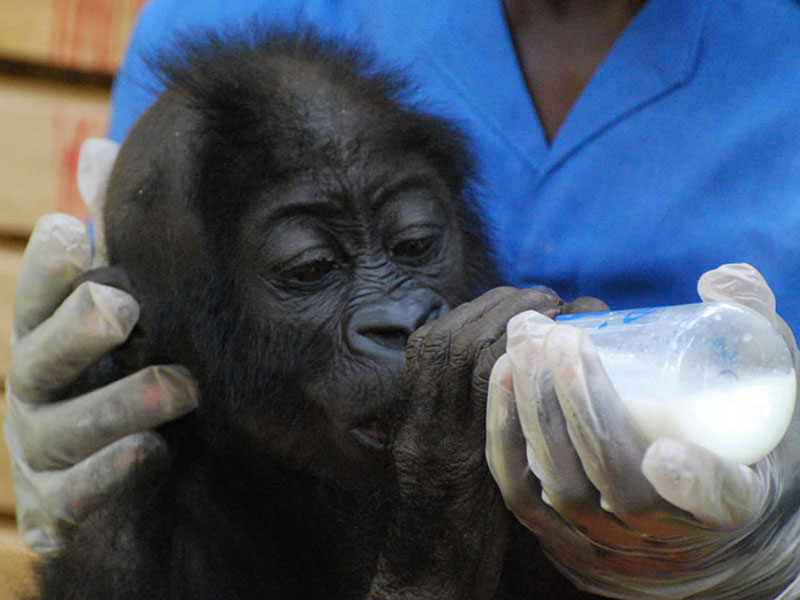
🌍 Conservation Success Stories
Mountain gorillas are a rare conservation success:
- In the 1980s, only ~250 mountain gorillas remained.
- Now, thanks to eco-tourism, anti-poaching patrols, and veterinary care, the population has grown to over 1,060.
- The success is largely due to international partnerships, community involvement, and tourism revenue being reinvested into local conservation.
Notable organizations:
- Dian Fossey Gorilla Fund
- Gorilla Doctors
- Uganda Wildlife Authority (UWA)
- Rwanda Development Board (RDB)
- ICCN (Congolese Institute for Nature Conservation)
🧭 Why Gorillas Matter
- Ecological Role: Gorillas disperse seeds and maintain forest health.
- Scientific Insight: Studying gorillas helps us understand human evolution, behavior, and health.
- Tourism Revenue: Supports entire economies and local communities.
- Cultural Significance: Gorillas are revered in local traditions and folklore.
📌 Final Thought
Gorillas are more than just animals—they are symbols of conservation, empathy, and coexistence. Their story is a powerful reminder of what we stand to lose—or save—based on our choices. Visiting gorillas in Uganda, Rwanda, or Congo is not only an awe-inspiring experience but also a direct investment in protecting one of our closest relatives and the forests they call home.
Gorillas are among the most fascinating and endangered creatures on Earth. Nestled deep within the misty rainforests of East and Central Africa, Uganda, Rwanda, and the Democratic Republic of Congo (DRC) are the only three countries where you can witness the endangered mountain gorilla in its natural habitat. These countries offer a unique opportunity to connect with our closest relatives in one of the most intimate wildlife experiences on the planet.
This guide explores the world of gorilla trekking across Uganda, Rwanda, and Congo — covering where to go, what to expect, conservation efforts, and tips for a responsible, unforgettable adventure.
🌍 Where to See Gorillas in the Wild
🦍 1. Uganda
Uganda is home to over half of the world’s remaining mountain gorillas, making it the top gorilla trekking destination globally.
While Rwanda often takes the limelight for gorilla tourism, Uganda is home to a more significant number of these primates. Bwindi Impenetrable National Park and Mgahinga Gorilla National Park are the primary destinations for gorilla watchers in the country.
Uganda offers a diverse experience for tourists. Not only can visitors encounter mountain gorillas, but they also have the chance to see other primates like chimpanzees, especially in places like Kibale National Park.
Uganda’s approach to gorilla tourism is slightly different from Rwanda’s. It offers a broader range of experiences, from budget to luxury, making it accessible to a more diverse group of tourists. This has given Uganda a reputation as a more versatile gorilla trekking destination.
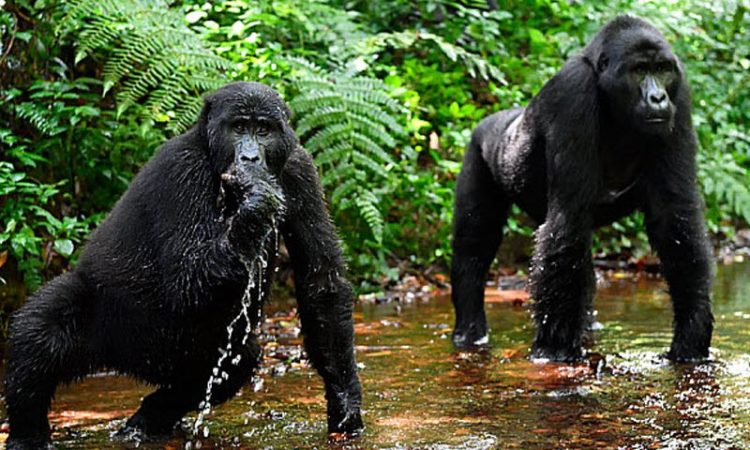
Main Gorilla Trekking Destinations:
- Bwindi Impenetrable National Park
- UNESCO World Heritage Site
- Hosts more than 22 habituated gorilla families
- Accessible from Kabale, Kisoro, and Buhoma
- Mgahinga Gorilla National Park
- Part of the larger Virunga Conservation Area
- Smaller and quieter, but ideal for a less crowded trek
Unique Experiences in Uganda:
- Gorilla Habituation Experience: Spend up to 4 hours with a semi-habituated gorilla group in Bwindi.
- Cultural Encounters: Visit the Batwa pygmy community, the original forest dwellers.
Permit Cost:
- $800 per person (as of 2024)
🦍 2. Rwanda
Rwanda is often the first country that comes to mind when thinking of gorilla trekking. This is largely due to its flagship national park, Volcanoes National Park. This park is home to the critically endangered mountain gorillas. Over the years, these gorillas have gained international acclaim, thanks in no small part to the groundbreaking work of Dr. Dian Fossey.
Fossey’s research and conservation efforts, which spanned nearly two decades, highlighted the dire situation of these great apes, threatened by poaching and habitat loss. Her dedication to the gorillas was immortalized in the book and film “Gorillas in the Mist.” Through her work, the gorillas of Rwanda became symbols of wildlife conservation.
Today, Rwanda’s gorilla tourism industry is a success story. The country has positioned itself as a luxury gorilla trekking destination, with permits fetching high prices, and the revenue largely reinvested into conservation and community initiatives.
Rwanda, the “Land of a Thousand Hills,” offers a more luxurious and accessible gorilla trekking experience.
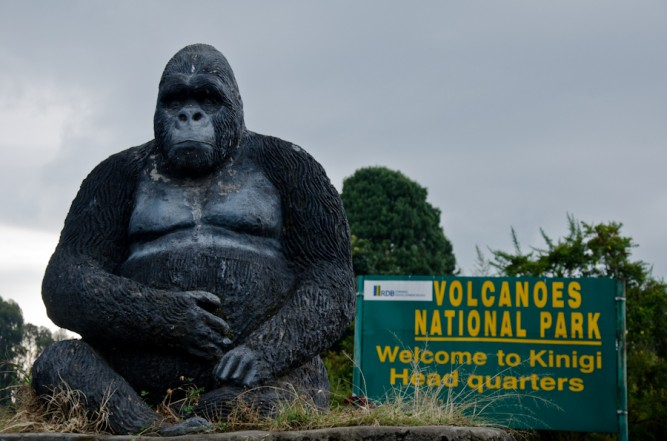
Main Destination:
- Volcanoes National Park
- Home to around 12 habituated gorilla families
- Located just 2–3 hours from Kigali (Rwanda’s capital)
- Known for its scenic beauty and eco-luxury lodges
Unique Experiences in Rwanda:
- Visit the Ellen DeGeneres Campus of the Dian Fossey Gorilla Fund, a world-class conservation center.
- Combine trekking with hikes to volcanoes like Mount Bisoke and Mount Karisimbi.
Permit Cost:
- $1,500 per person (premium experience)
🦍 3. Democratic Republic of Congo (DRC)
Congo offers both mountain gorilla and the rare eastern lowland gorilla experiences, making it a unique destination for primate lovers.
The DRC is home to both mountain gorillas and their lowland relatives, the Grauer’s gorillas. Virunga National Park, Africa’s oldest national park, is the primary destination for mountain gorilla trekking in the DRC.
The DRC’s gorillas have been embroiled in the country’s long-standing conflicts, with Virunga often being at the frontline. The park and its rangers have faced immense challenges from armed militias, poachers, and illegal charcoal production.
Despite this, the resilience and dedication of the park rangers and conservationists have been commendable. Their stories and the plight of the DRC’s gorillas were highlighted in the Netflix documentary “Virunga,” which brought international attention to the region.
While the DRC’s gorilla tourism industry isn’t as developed as Rwanda’s or Uganda’s due to ongoing security concerns, the raw and untamed nature of the experience in Virunga appeals to the adventurous spirit of many.
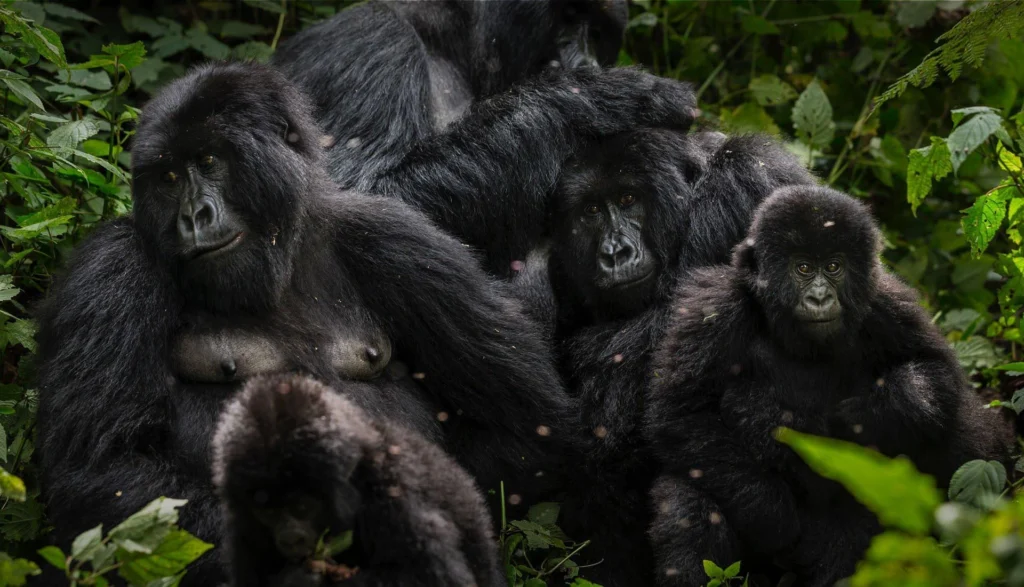
Main Gorilla Trekking Destinations:
- Virunga National Park
- Africa’s oldest national park and UNESCO World Heritage Site
- Home to mountain gorillas and incredible biodiversity
- Temporarily closed at times due to security concerns
- Kahuzi-Biega National Park
- Famous for eastern lowland gorillas (Gorilla beringei graueri)
- A remote and rarely visited experience, but deeply rewarding
Permit Cost:
- Around $400–$500 per person (more affordable, but less accessible)
🛤️ What to Expect on a Gorilla Trek
- Hiking Time: Treks can last from 30 minutes to over 5 hours depending on gorilla locations.
- Physical Fitness: Moderate fitness is recommended, as terrain can be steep and slippery.
- Group Size: Limited to 8 visitors per gorilla family per day.
- Interaction Time: You’ll spend 1 hour with the gorillas once located.
- What to Bring: Hiking boots, gloves, long trousers, waterproof jacket, snacks, and plenty of water.
🌱 Conservation Efforts and Impact
Thanks to effective conservation programs, mountain gorilla populations are slowly increasing, from around 620 in 1989 to over 1,060 today (WWF, 2023).
Key Initiatives:
- Habituation and monitoring by park rangers and researchers
- Revenue sharing with local communities to reduce poaching
- Eco-tourism supporting local employment and education
Dian Fossey’s Legacy:
The pioneering work of Dian Fossey in Rwanda helped bring global attention to gorilla conservation. Her efforts continue through the Fossey Fund and responsible tourism.
🧭 Tips for Responsible Gorilla Trekking
- Keep a 7-meter distance from the gorillas
- Wear a mask to prevent disease transmission
- Do not use flash photography
- Avoid sudden movements and loud noises
- Support eco-lodges and community-run experiences
✈️ How to Access Gorilla Trekking Sites in Uganda, Rwanda, and Congo
Gorilla trekking requires planning in advance due to limited permits, remote locations, and international travel logistics. Here’s how to get there and what it costs.
🇺🇬 Uganda (Bwindi & Mgahinga)
Nearest International Airport:
- Entebbe International Airport (EBB), near Kampala
- Most travelers take a domestic flight to Kisoro or Kihihi airstrips, or drive 8–10 hours from Entebbe to Bwindi/Mgahinga.
Transportation Options:
- Private safari vehicle: Most common for tourists
- Domestic flights: Provided by AeroLink or Bar Aviation
- Buses: Not recommended for tourists due to long travel times and limited schedules
Permit Price (as of 2024):
- $800 per person for a standard 1-hour visit
- $1,500 for a habituation experience (up to 4 hours)
🇷🇼 Rwanda (Volcanoes National Park)
Nearest International Airport:
- Kigali International Airport (KGL)
- From Kigali to Volcanoes National Park (in Musanze), it’s only a 2-3 hour drive.
Transportation Options:
- Private car hire or tour operator
- Local taxis or buses to Musanze for budget travelers (less common for international tourists)
Permit Price:
- $1,500 per person
- Rwanda markets itself as a luxury gorilla trekking destination—ideal for high-end travelers seeking comfort and shorter travel times
🇨🇩 Democratic Republic of Congo (Virunga & Kahuzi-Biega)
Nearest International Airport:
- Goma International Airport (GOM) – for Virunga
- Bukavu (via Rwanda or local flights) – for Kahuzi-Biega
Transportation Options:
- Access often via Rwanda (Kigali), then overland to the Congolese border
- Security and permits must be arranged via Virunga National Park or local tour operators
Permit Prices:
- Virunga National Park: ~$400 per person
- Kahuzi-Biega (Eastern Lowland Gorillas): ~$450 per person
Note: Travel advisories may apply for Congo. Always check with your country’s foreign affairs department and consider travel insurance.
🧳 Travel Tips for Visitors Coming from the USA
✈️ How to Get There from the U.S.
- There are no direct flights from the U.S. to Uganda, Rwanda, or Congo.
- Popular connection points include:
- Europe: London, Amsterdam, Brussels, Paris
- Middle East: Dubai, Doha, Istanbul, Addis Ababa
Example Route to Uganda (Entebbe):
- New York (JFK) → Amsterdam (AMS) → Entebbe (EBB)
Example Route to Rwanda (Kigali):
- Washington D.C. (IAD) → Brussels (BRU) → Kigali (KGL)
Example Route to Congo (Goma or Bukavu):
- Fly to Kigali, then overland to the border
📅 Booking Your Trip
- Book gorilla permits 3–6 months in advance, especially during dry seasons (June–August, December–February).
- Work with a licensed tour operator to handle:
- Permit purchases
- Transport and accommodation
- Guides and porters
💰 Estimated Total Trip Cost from USA (Per Person):
| Destination | Flight (Economy) | Permit | Lodging (3–5 days) | Tour Package | Total Estimate |
|---|---|---|---|---|---|
| Uganda | $1,000–$1,500 | $800 | $300–$600 | $500–$1,000 | $2,600–$3,900 |
| Rwanda | $1,000–$1,500 | $1,500 | $400–$800 | $700–$1,200 | $3,600–$5,000+ |
| Congo | $1,200–$1,600 | $400–$450 | $200–$500 | $600–$900 | $2,400–$3,500 |
✅ Tip: Uganda is considered the best value, Rwanda the most accessible, and Congo the most adventurous.
🧼 Health, Visas & Safety
Health Requirements:
- Yellow fever vaccination: Required for all three countries
- Malaria prevention: Highly recommended
- COVID-19 protocols: May still apply—check latest regulations
Visa Info:
- Uganda & Rwanda: Available online (e-visa) or at entry points
- Congo: Usually arranged through the park or tour agency in advance
- East Africa Tourist Visa: $100, valid for Uganda, Rwanda, and Kenya—convenient for multi-country trips
Safety Tips:
- Always use reputable tour operators
- Check travel advisories (especially for Congo)
- Hire armed ranger escorts when required
- Travel in groups and avoid remote areas without a guide
🧭 Final Thoughts for International Travelers
Gorilla trekking is a once-in-a-lifetime wildlife experience, and with proper planning, it’s accessible to travelers from anywhere in the world — including the United States. Whether you’re seeking the raw beauty of Uganda’s Bwindi Forest, the premium comforts of Rwanda, or the untamed adventure of Congo, East Africa has a gorilla experience tailored just for you.
🙋♀️ Frequently Asked Questions (FAQs)
Q1: Is gorilla trekking safe?
Yes. Armed guides and trackers lead all treks, and gorillas are habituated to human presence. The main concern may be terrain difficulty or weather conditions.
Q2: When is the best time to go?
The dry seasons (June–August and December–February) are ideal for trekking, but gorilla visits happen year-round.
Q3: Can children go on a gorilla trek?
Most countries require trekkers to be at least 15 years old for safety and conservation reasons.
Q4: How fit do I need to be?
You don’t need to be an athlete, but moderate physical fitness is advised due to the rugged terrain.
Q5: What’s the difference between mountain and lowland gorillas?
Mountain gorillas live in high-altitude forests and have thicker fur, while eastern lowland gorillas are larger and inhabit lower forest zones in Congo.
✨ Final Thoughts
Seeing gorillas in the wild is often described as a life-changing experience. Whether you choose Uganda’s rich biodiversity, Rwanda’s premium accessibility, or Congo’s adventurous landscapes, the opportunity to meet these gentle giants in their natural habitat is rare and powerful.
Travelers not only witness a miracle of nature but also contribute to one of the world’s most successful wildlife conservation stories. So pack your boots, grab your camera, and prepare for an unforgettable trek through Africa’s green heart.





